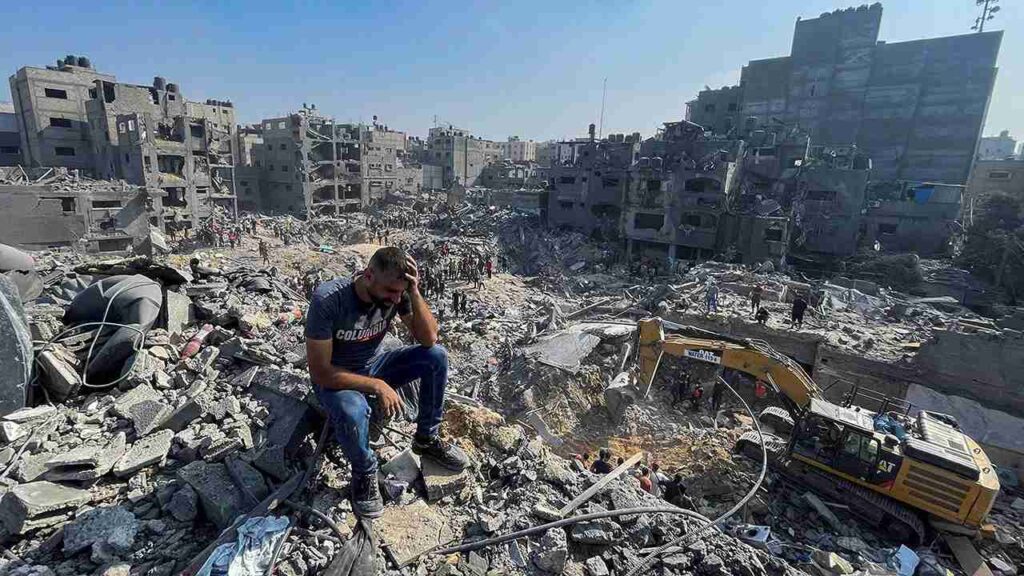The escalating battle in the Middle East has plunged Gaza and South Lebanon into chaos, leaving a course of destruction that resonates globally. Israel declares a bloodbath in Gaza, South Lebanon, boosting worries over the humanitarian results and the wider importance of nearby balance. Amid heavy bombardment and fierce clashes, civilians are caught in a humanitarian disaster, highlighting the complexities of this lengthy-standing conflict.
Unpacking the Surge of Violence
The scenario has declined rapidly over recent weeks, with Israel ramping up airstrikes and floor offensives in Gaza and South Lebanon. According to various resources, the operation’s stated purpose is to disassemble proactive infrastructure in these areas. However, the aggressive procedures have raised worries among international human rights corporations, who fear that civilian regions are being disproportionately affected.
Despite foregoing efforts to attain a ceasefire, violence has escalated, and both aspects face mounting losses. As Israel unleashes a bloodbath in Gaza, South Lebanon, the repercussions are felt a long way beyond the instant location, shaking diplomatic ties and leaving tens of millions to face an uncertain destiny.
The Humanitarian Toll: An Unfolding Tragedy

The effect on civilians has been especially devastating. In Gaza, families conflict to locate protection as moves devastate residential areas. Basic infrastructure, along with hospitals, schools, and strength facilities, has maintained extreme harm, including the day-by-day demanding situations citizens face. South Lebanon, in the meantime, survives an inflow of displaced households fleeing from affected regions, with useful resource groups running to provide meals, refuge, and medical assistance.
- Impact on Children and Vulnerable Populations
Among those suffering the most are children, women, and the elderly. Many have been injured, displaced, or otherwise traumatized by the ongoing violence. As Israel unleashes a bloodbath in Gaza, South Lebanon, the toll on weak populations has become a point of focus for international organizations seeking urgent intervention.
According to UNICEF, children in these areas are experiencing heightened levels of concussion and insecurity. For many, access to education, healthcare, and even basic human needs has become nearly impossible. - Infrastructure in Crisis
Gaza and South Lebanon’s infrastructures are rapidly collapsing under the pressure of ongoing military action. Power outages are common, and the healthcare system is severely strained. Medical centres in Gaza, already struggling beneath confined sources, now face overwhelming numbers of injured civilians needing on-the-spot care. - Hospitals and emergency offerings in South Lebanon are in addition overwhelmed, and essential sources are swiftly declining. With the relentless bombings, rebuilding efforts seem far off, raising questions about the future sustainability of these communities.
Related Video Resources for Additional Context:
Global Reaction and the Road Ahead
International leaders have expressed deep concern over the escalation, urging both sides to consider a ceasefire. The United Nations, European Union, and various Middle Eastern international locations have again and again called for instant de-escalation and are trying to bring diplomatic resolutions. However, those calls are often met with complex political and strategic obstacles, similarly complicating efforts to acquire peace.
In light of the modern-day violence, worldwide public opinion is sharply divided. While a few view Israel’s moves as a justified response to safety threats, others argue that the civilian toll in Gaza and South Lebanon has gone too some distance. This polarizing attitude provides another layer of issue to worldwide mediation efforts.
Diplomatic Challenges and Potential Paths to Peace
Strained Alliances and Diplomatic Efforts
The conflict has also placed titanic stress on Israel’s partnerships with different nations, especially as civilian losses grow. Key allies, such as the United States, were said in their required condition, however, the underlying tensions held to prevent the effectiveness of diplomatic solutions. Arab nations, already careful of Israel’s guidelines, are increasingly said in their opposition to these navy strategies.
Opportunities for a Ceasefire
Despite the grim reality on the ground, there are glimmers of wish. Humanitarian organizations and neutral international actors are attempting to facilitate negotiations. Efforts to bring a ceasefire cognizance on humanitarian corridors, offering essential elements, and creating secure zones for civilians. Nonetheless, with each aspect embedded in their positions, reaching a lasting peace remains a task.
The Path Forward: Uncertain but Necessary
Looking forward, the war’s lengthy-time period impact on Gaza and South Lebanon is probably to be profound. Not best does Israel’s boosted technique threaten the stableness of the instant region, but it also risks drawing in neighbouring countries, growing the potential for a bigger fight. Meanwhile, the humanitarian toll continues to grow, with displaced households struggling for survival and children surviving the disturbing results of battle.
Israel unleashes a bloodbath in Gaza and South Lebanon; however, the international watches with developing challenges and a feeling of urgency. In an interconnected global landscape, the destiny of one area has large-attaining results. For Gaza, South Lebanon, and the international network, the street to peace is stuck with boundaries—however, a continued attempt stays essential.
Conclusion
As the conflict between Israel and militant groups continues to spread, Gaza and South Lebanon endure the brunt of the violence, reflecting a broader struggle for peace and stability. The modern-day scenario underscores the pressing want for humanitarian intervention, diplomatic negotiations, and a protracted-time period commitment to peace from all sides worried.
The Lasting Impact on Future Generations
The ongoing violence leaves an inheritance of suffering for the generations to come back. The affected families face uncertainty and displacement, living in the shadow of worry. Investing in dialogue, prioritizing humanitarian resources, and addressing root causes is key for long-term stability in vulnerable regions.
Israel’s bloodshed in Gaza and South Lebanon reflects the historical conflict escalating presently. Transitioning to non-violence faces challenges but is crucial for renewing human dignity and fostering hope in Gaza and South Lebanon.
Keywords:
- Israel Gaza conflict
- Gaza Lebanon crisis
- Humanitarian impact
- Middle East escalation
- Civilian toll war
